 I hope many ladies can join with me every Tuesday in celebrating the life and cult of St Anne throughout the history of the Church leading up to her feastday on the 26th of July. This is a nine week posting of a beautiful article published in the Catholic newspaper called, Catholic ~ The Voice of Catholic Orthodoxy the article itself is is an exerpt from a book by Rev Fr Myles V Ronan CC, MRIA 1927.
I hope many ladies can join with me every Tuesday in celebrating the life and cult of St Anne throughout the history of the Church leading up to her feastday on the 26th of July. This is a nine week posting of a beautiful article published in the Catholic newspaper called, Catholic ~ The Voice of Catholic Orthodoxy the article itself is is an exerpt from a book by Rev Fr Myles V Ronan CC, MRIA 1927.Edit 2011: I have since discovered that the wonderful newspaper that this St Anne article has come from, is put out by the Transalpine Redemptorists on the island of Papa Stronsay in Scotland. I now have their blog linked at the top of my lefthand sidebar, you can order this newspaper/magazine from their site.
Today is week two, if you missed last week's posting, click here to read.
During these nine weeks I am also giving away a St Anne gift for each posting (either a St Anne chaplet, rosary or necklace of heirloom quality.) To enter the draw, read the day's posting and answer the question taken from the St Anne story. Then email me the answer with your name and email address written beside it, if the name and email address is not there, I cannot add you to the draw. I will draw out and announce the winner the following Tuesday and release the photo of the next gift and question and on it goes! Feel free to enter each week's draw.
I ask just one special favour, if you could offer an Ave in honour of St Anne for my sister Carmen who would dearly love to be blessed with a child after nine years of infertility, many grateful thanks.
During these nine weeks I am also giving away a St Anne gift for each posting (either a St Anne chaplet, rosary or necklace of heirloom quality.) To enter the draw, read the day's posting and answer the question taken from the St Anne story. Then email me the answer with your name and email address written beside it, if the name and email address is not there, I cannot add you to the draw. I will draw out and announce the winner the following Tuesday and release the photo of the next gift and question and on it goes! Feel free to enter each week's draw.
I ask just one special favour, if you could offer an Ave in honour of St Anne for my sister Carmen who would dearly love to be blessed with a child after nine years of infertility, many grateful thanks.
And so we continue on from last week.....
AN UNEARTHED BASILICA AND ROMAN DEVOTION
About the year 1912, during excavations in the Roman Forum, the Basilica of St Maria Antiqua was unearthed. This basilica had been lost to view since the 10th century, and it was a great surprise to find that St Anne appears in fresco in two, if not three, places on its walls.
In a niche in the wall of the right aisle are painted three woman saints with their names, Maria, Elizabeth and Anna, each with a child in her arms. A second image represents a woman saint carrying a child who has earrings. As the Madonna and the Infant Jesus appear in several places in the church, and in no case does the Holy Child wear such ornaments, it seems clear that this too must be St Anne and her daughter.
The first mention of St Anne outside Jerusalem and Syria is at Constantinople, where in the middle of the sixth century Justinian I had a church consecrated to her. 150 years later, Justinian II either restored this church or built another one of St Anne.
During this very period Pope Constantine (a Syrian) was invited by Justinian II to visit him at Constantinople. His sojourn in the East lasted about 18 months. It is therefore quite possible that he may have been present at the consecration of the church and have assisted in the translation of some relics of St Anne which were at Constantinople.
It would seem then that when the Pope returned to his Roman palace, which stood over St Maria Antiqua and was connected with it, he would desire to see among the paintings in his chapel some representation of the saint.
THE HOLY TOMB AT APT
It is the general opinion that the blessed mother of Mary died at Jerusalem and was buried there. All historians who have spoken of her agree that her body did not remain there. Tradition asserts that this holy body was brought to the South of France by the first apostles of that countryside, namely, St Lazarus and his sisters, St Mary Magdalen and St Martha, the holy Marys, Jacobe and Salome, St Trophimus, St Maximin and the other disciples of our Saviour, who were the founders of the Churches of Marseilles, Arles, Aix and Avignon.
Under the influence of Roman civilisation, which covered the seas with its vessels, the relations between the Gauls and Palestine were numerous and frequent. Marseilles was then the counting-house of the West.
We know that the two Marys, Jacobe and Salome, were closely related to the family of Our Lord. And it is said that St Anne was probably the sister of Jacob, father of St Joseph and of Cleophe, and consequently the aunt and great aunt of the two Marys. It is also said that, foreseeing the disturbances that would take place in Palestine, they decided, before leaving it, to take with them the remains of their holy relative along with other relics.
Having arrived at Marseilles they proceeded inland for greater security to a place called Apt which was separated from the sea by a triple chain of mountains.
 Above Right: The altar of the Chapel Royal in Apt opened to reveal the sacred relics.
Above Right: The altar of the Chapel Royal in Apt opened to reveal the sacred relics.Above Left: The golden statue of St Anne which crowns the chapel.
The holy relics were confided to St Auspice, first Bishop of Apt which was a Roman town and contained an amphitheatre for games and spectacular displays. In an underground cave at a distance from, but connected with, the amphitheatre, the early Christians met to assist at Mass and receive the Sacraments. It was a real catacomb. Here St Auspice placed the body of St Anne, and here his own remains were laid after he had been martyred. Other holy martyrs and confessors of the infant Church of Apt were also buried in the cave.
According to tradition, St Auspice having placed the body of St Anne in its chamber, and having sealed the wrappings, suspended before the grille window a lamp that remained alight for more than 600 years and which was extinguished only at the moment of the miraculous finding of the relics.
Over this ancient catacomb a church was built in the fifth century by St Castor, and dedicated with the title of St Mary of Apt. The stones of the Roman amphitheatre in the neighbourhood were used in its construction. But stormy times were in store for Apt and its church, and the Christians, aware of the coming onslaught, closed the opening to the underground crypt in order to protect the relics of St Anne and the other saints.
Fire and sword so devastated the town as well as the church of Apt that the Christians who inhabited the place in after years had lost all knowledge of the situation of the ancient cave and of the entrance to it.
Towards the end of the eighth century, the victories of Charles Martel and Charlemagne had driven the barbarian hordes beyond the Pyrenees. Frankland now repaired the ruins left behind them by the invaders.
At Apt, a great church had been built over the ruins of the former church, but the entrance to the crypt had not been found.
To be continued next Tuesday....
 Last week's question was: What were the two places mentioned where St Anne and St Joachim had lived? The answer was: Nazareth and Jerusalem.
Last week's question was: What were the two places mentioned where St Anne and St Joachim had lived? The answer was: Nazareth and Jerusalem.Maria T Newcomer was the first name out of the hat with the correct answer ~ congratulations! Email me with your address Maria, and I'll post the St Anne chaplet you see above to you!
For all those ladies who entered last week's draw, feel free to answer this week's draw, answering the new question below.
Here is an image of this week's St Anne chaplet:

To have a chance to win this week's heirloom quality St Anne chaplet made from gemstones, swarovski crystals and a solid bronze vintage reproduction St Anne d'Auray medal answer the following question:
Q: Which saint placed the body of St Anne in the crypt at Apt, France?
Email me the answer with your name and email address written next to the answer. Come back next Tuesday to see if you have won!


































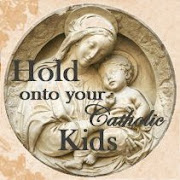


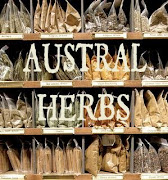

























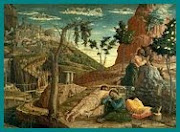








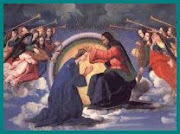








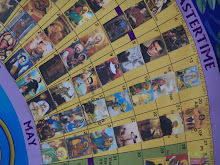


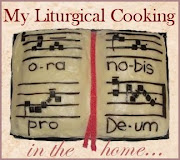
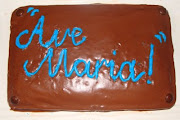



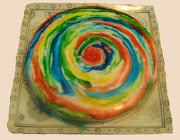
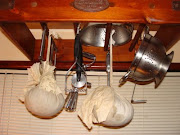

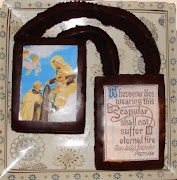

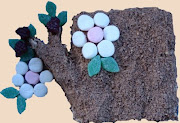
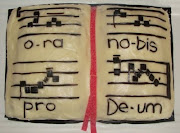

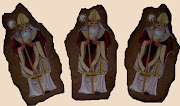







1 comment:
Anne these pics are just so awesome and a tad overwhelming to take it all in wow . thanks so much for all the effort . just beautiful .
Post a Comment